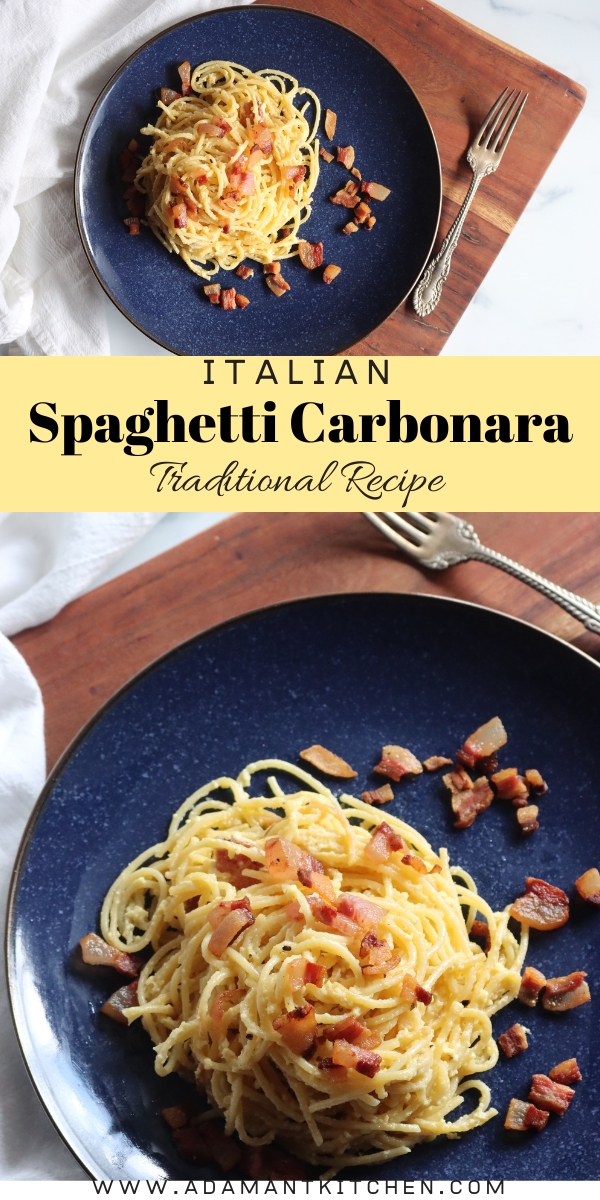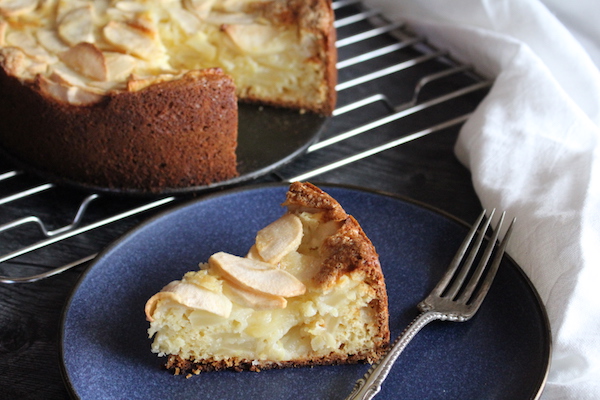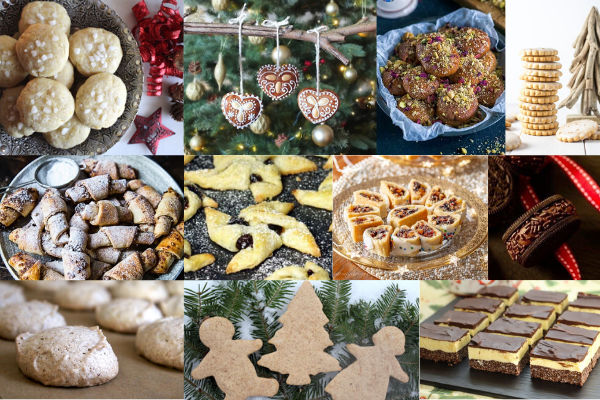This post may contain affiliate links. Please see our disclosure policy.
Spaghetti Carbonara is a classic Roman dish that’s beloved around the world for its simplicity and rich flavor. Made with just five ingredients — spaghetti, guanciale, eggs, Pecorino Romano, and black pepper — it’s proof that the best dishes often come from the fewest ingredients.
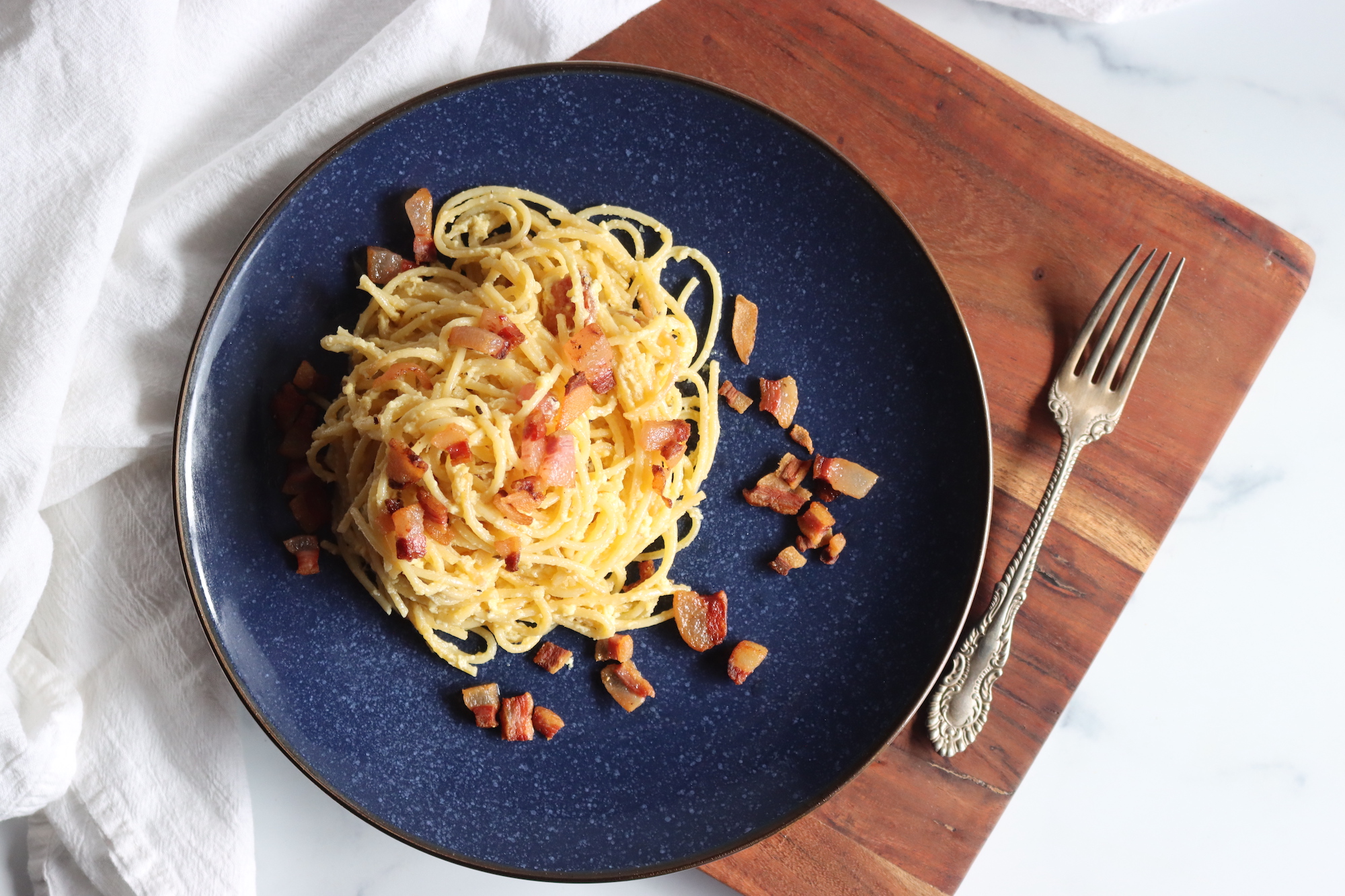
Traditional Italian Carbonara is a simple Italian pasta dish, and I learned this recipe staying at a hostel while backpacking through Italy. I did a semester-long language study abroad in college, and during our “spring break,” I set out on my own to see the countryside…but on a shoestring budget.
Luckily, just about every other traveler backpacking through Europe is in a similar spot, and this particular recipe was tought to me by a Roman hostel keeper. The store around the corner had all the ingredients, and a group of us shared a delicious meal…all at about a dollar per person. (That was in 2007 dollars…)
Who knew you could eat so well on so little! And with the simple cooking equipment available in a hostel kitchen.
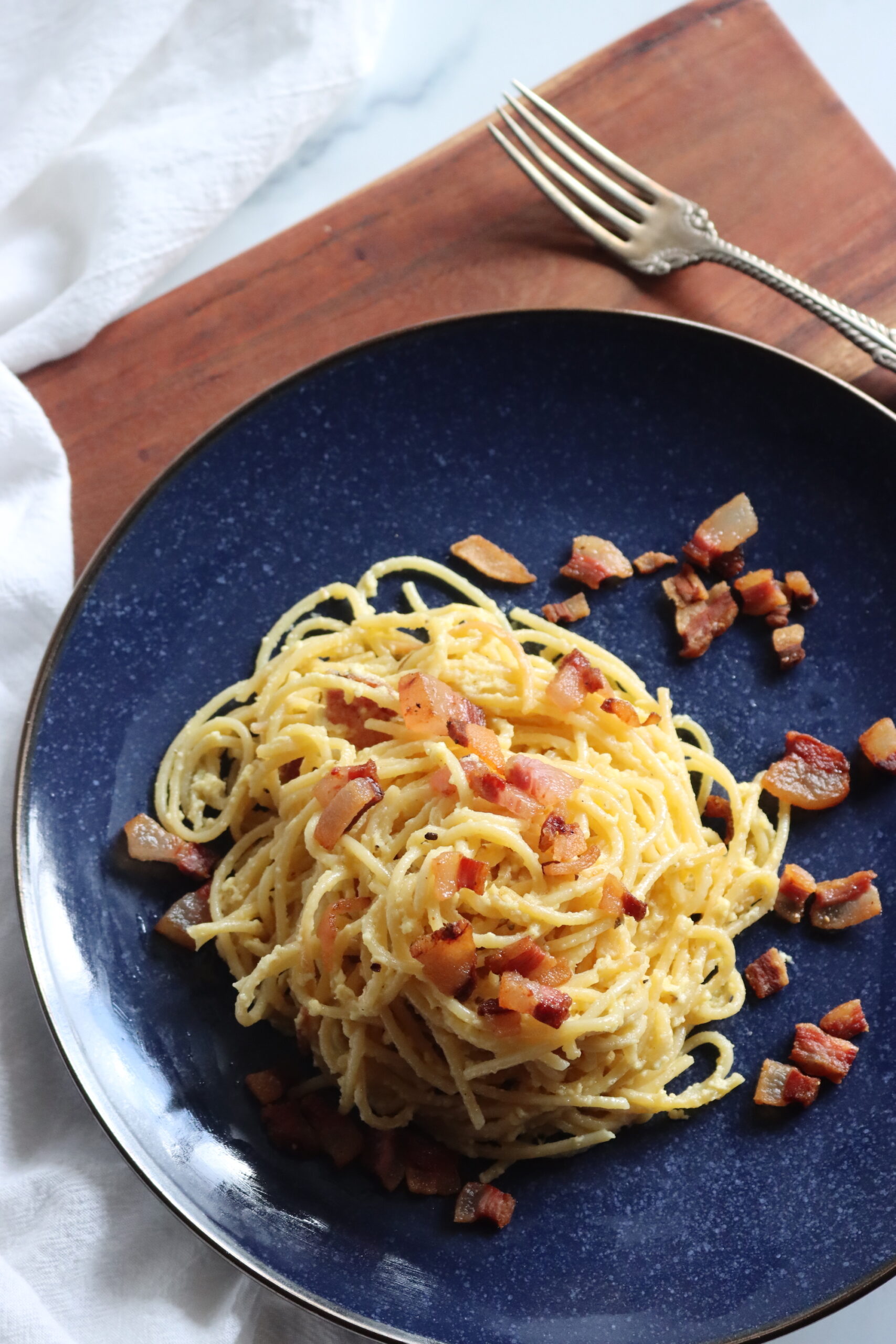
Authentic Spaghetti Carbonara
Before we jump into the recipe, let’s talk about the key ingredients that make this dish truly authentic:
- Guanciale: This is the most important ingredient, and it’s what sets Carbonara apart from other pasta dishes. Guanciale is an Italian cured meat made from pork cheek, and it has a rich, fatty texture that adds the perfect depth of flavor to the dish. While it is a cured piece of pork, it’s really different than either pancetta or bacon. You can substitute those in a pinch, but the dish won’t be as tasty (and not authentic).
- Pecorino Romano: This sharp, salty sheep’s milk cheese is the traditional choice for Carbonara. It’s bold and flavorful, providing a kick to balance the richness of the guanciale.
- Eggs: Whole eggs are used to create the creamy sauce. The key here is to make sure the eggs don’t turn into scrambled eggs! You’ll want to add them to the hot pasta, but not so hot that they cook too much.
- Black Pepper: Freshly ground black pepper is essential for adding a peppery kick that cuts through the richness of the dish.
In the US, many home cooks try to cheat a bit by adding cream to the recipe, but that’s not traditional. It can lead to a gloopy dish.
Similarly, garlic, onion, and parsley are sometimes added when guanciale isn’t available, because they’re going to give complexity and umami flavor. They’re not traditional, and completely unnecessary if you start with high-quality, traditional ingredients.
For a truly traditional Carbonara, remember: Guanciale, not pancetta or bacon. And no cream, no garlic, no onion, and no parsley! These are variations, not part of the authentic recipe. Trust me, once you make it the traditional way, you won’t miss any of those extras!
(If you can find pork cheek from your local butcher, you can even make guanciale in your own kitchen!)

Ingredients for Traditional Italian Spaghetti Carbonara
This recipe is simple, and has just five ingredients:
- 1 pound spaghetti (454 g)
- ½ pound guanciale (225 g)
- 5 eggs
- 1 ¼ cups grated Pecorino Romano, packed (about 125 g)
- Freshly ground black pepper
Pecorino Romano is a sharp sheep cheese that’s similar in some ways to Parmesan, at least in texture. The flavor of pecorino is much more intense, and yields a better (and more traditional) carbonara. You can substitute parmesan if you really need to, it’s better than skipping the cheese altogether (which won’t work at all), but pecorino really is much better in this dish.
As I’ve said before, don’t use cream, onion, garlic or parsley. They really change the dish, and they’re not traditional.
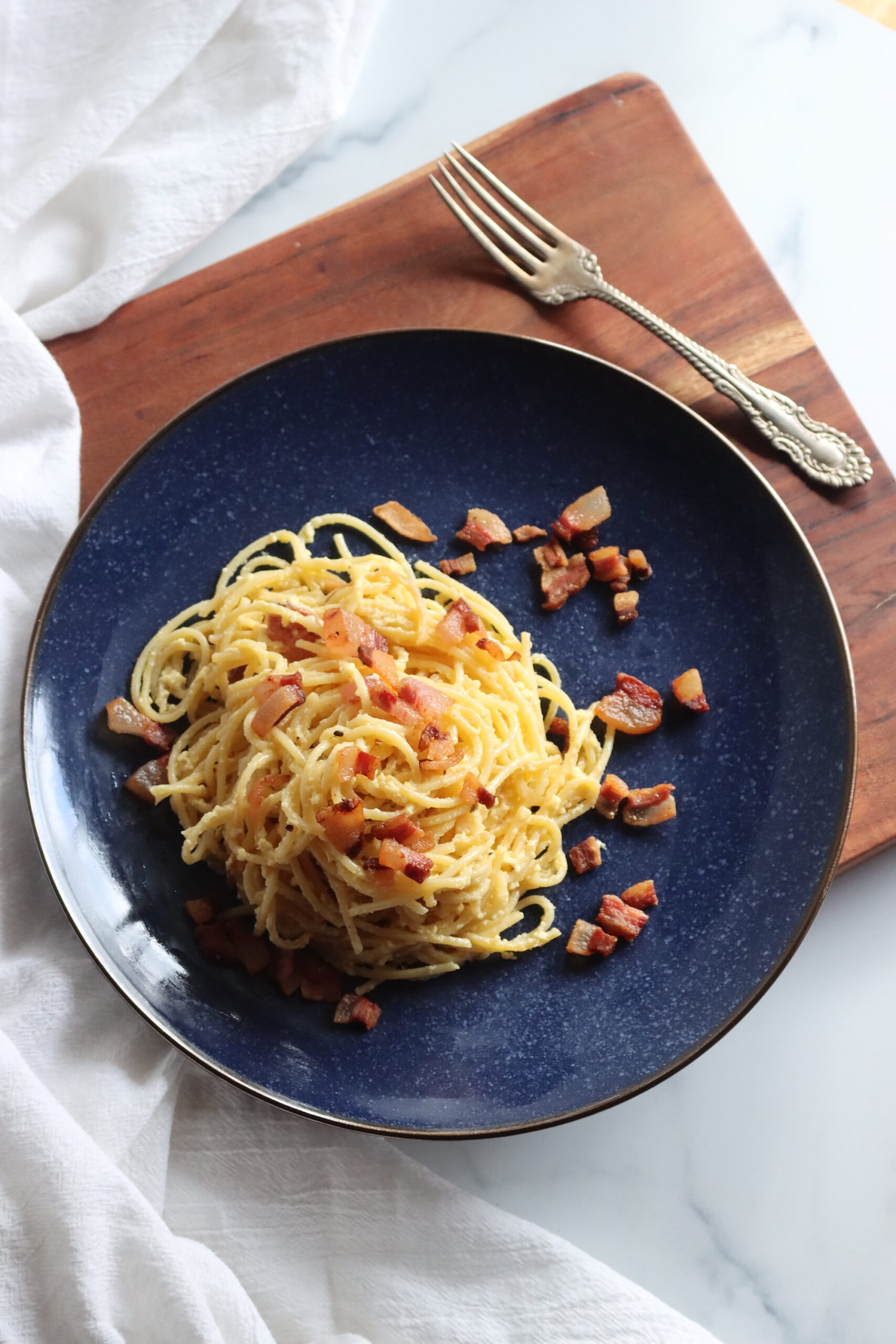
How to Make Spaghetti Carbonara
Bring a large pot of salted water to a boil for the pasta. Use about 5 to 6 cups of water and 1 tsp salt.
While the water heats, cut the guanciale into small cubes or slices. Heat a skillet over medium heat and cook the guanciale for about 2-3 minutes, stirring occasionally. The fat from the guanciale will melt and crisp up. The level of crispiness is up to you, but make sure it’s golden and slightly crunchy.
No oil needed — guanciale has plenty of fat on its own. If you want, add a tablespoon of cooking water from the pasta to emulsify the fat into a luscious sauce. Turn off the heat and cover the pan. Set aside.
In a bowl, whisk together the eggs, grated Pecorino Romano, and freshly ground black pepper until you have a smooth, creamy sauce. You want it to be thick but not too stiff.
Once the water is boiling, add the spaghetti. For a perfect, authentic experience, don’t break the pasta. Instead, hold it upright and slowly dip the spaghetti into the pot. As the pasta softens, gently push it down into the water. Cook the spaghetti according to the package instructions, making sure it’s al dente.
When the pasta is ready, reserve a bit of the cooking water (about 1-2 tablespoons) and then drain the pasta. Add the hot spaghetti to the skillet with the guanciale. Toss it around to coat the pasta in the rendered fat and guanciale bits. Be sure the pasta is hot, but turn off the heat at this point to avoid scrambling the eggs.
Quickly pour the egg and Pecorino mixture into the hot pasta, stirring constantly to create a creamy sauce. The heat from the pasta will cook the eggs just enough, without turning them into scrambled eggs. If the sauce seems too runny, add a bit more grated Pecorino Romano. If it’s too thick, thin it out with a tablespoon of reserved pasta water.
Serve the Carbonara immediately, creating a pasta nest on each plate. Garnish with more Pecorino Romano and a generous amount of freshly ground black pepper. No need for extra garnish—this dish speaks for itself!
Tips for the Best Carbonara
- Don’t rush the egg mixture: The key to a perfect Carbonara is making sure the eggs are just cooked enough to create a creamy, velvety sauce. The pasta should be hot enough to cook the eggs without scrambling them. You’re adding the egg mixture to the hot pasta so that the heat from the pasta can cook it. Don’t turn on the heat and scramble them in the pan.
- Adjust the creaminess: If your Carbonara sauce is too thick, add a bit of the reserved pasta water to loosen it. If it’s too runny, you can always add a little more grated Pecorino Romano.
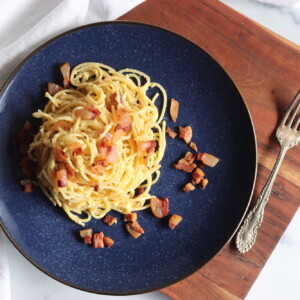
Spaghetti Carbonara
Ingredients
- 1 pound Spaghetti
- ½ pound Guanciale
- 5 eggs
- 1 ¼ cups Pecorino Romano, grated and packed
- Black Pepper, Freshly Ground
Instructions
- Cook the guanciale in a skillet over medium heat for 2-3 minutes until crispy, then set aside.
- In a bowl, whisk together eggs, Pecorino Romano, and black pepper until creamy.
- Cook spaghetti in salted water, reserving some cooking water, then drain. (A pound of spaghetti needs about 5 to 6 cups of water and 1 tsp of salt to cook.)
- Toss the spaghetti in the skillet with guanciale. Turn off the heat.
- Quickly add the egg mixture to the hot pasta, stirring until creamy.
- Serve immediately, garnished with more Pecorino Romano and black pepper.
Notes
Carbonara Variations
While the traditional recipe calls for guanciale and Pecorino Romano, you may encounter variations. For example:- Pancetta: If guanciale is hard to find, pancetta is often used as a substitute. However, be aware that it’s drier and less fatty than guanciale, so your Carbonara may not have the same depth of flavor.
- Parmigiano Reggiano: Some use Parmigiano instead of Pecorino Romano. While it’s a delicious cheese, it’s not traditional in this dish, and it will give the Carbonara a milder flavor.
Troubleshooting
- Don’t rush the egg mixture: The key to a perfect Carbonara is making sure the eggs are just cooked enough to create a creamy, velvety sauce. The pasta should be hot enough to cook the eggs without scrambling them. You're adding the egg mixture to the hot pasta so that the heat from the pasta can cook it. Don't turn on the heat and scramble them in the pan.
- Adjust the creaminess: If your Carbonara sauce is too thick, add a bit of the reserved pasta water to loosen it. If it’s too runny, you can always add a little more grated Pecorino Romano.
Nutrition
Nutrition information is automatically calculated, so should only be used as an approximation.
Italian recipes
Looking for more Traditional Italian Recipes?
